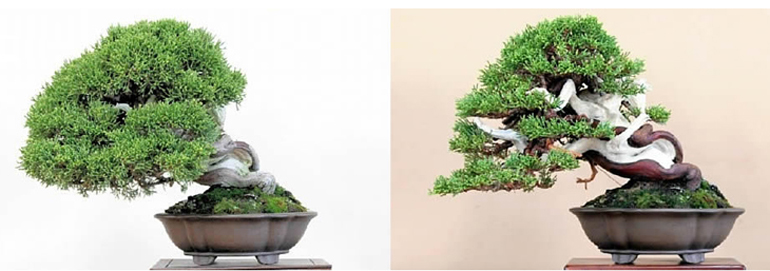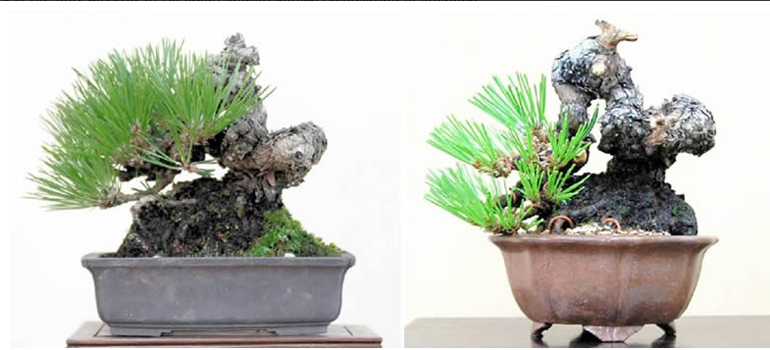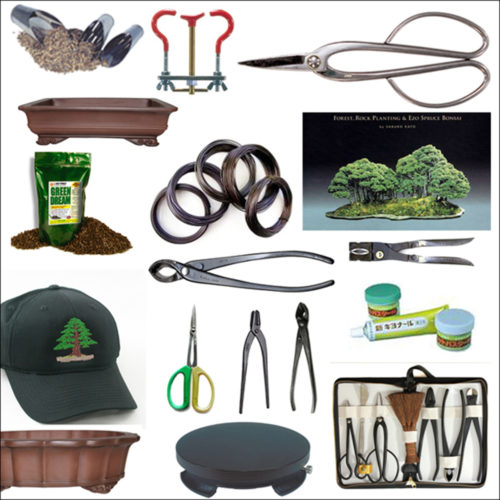
We found these two photos at Bonsai Shikoku. All the text is Japanese and there are no intermediate photos, so what you see is what you get. At a glance you can see that the foliage has been thinned in order to expose most of the trunk and some of the branching. This allows for an unobstructed view of the deadwood and the lower sections of the living veins. Another obvious change is the result of meticulous cleaning and brightening of the deadwood and living veins.
Continuing with our recent Before and After theme, we’ve got couple good ones for you. Both are from Bonsai Shikoku. The Shimpaku juniper above came with untranslated Japanese text, so you’re stuck with my comments, though we do have a link to an excellent video on treating deadwood and living veins.
The Japanese black pine below has English text, so we’ll dispense with my comments and go straight to the source. Enjoy!
MID WINTER SITE WIDE SALE
20% OFF EVERYTHING
PLUS AN EXTRA 10% TO 20% OFF ROSHI TOOLS
and AN EXTRA 10% OFF BONSAI POTS
–

These photos are also from Bonsai Shikoku, but this time there's English text, as follows... "Artists adapt trees once in 4 to 5 years. The main purpose of it is to maintain a good size and to receive the sunlight by cutting the branches. "This time he adapted a Misho (grown from seed) Kuromatsu (Japanese black pine) which is about 40 years old. A long time has passed since the last adaptation. The tree's branches and needles were too long and the balance with trunk was bad. He felt the branch on the left is too big against the trunk on the right. "He cut the long branch and it allowed the trunk to be seen. He also showed us the technique to make Jin with the cut branch by knuckle cutters and chisels...." There's more here.
